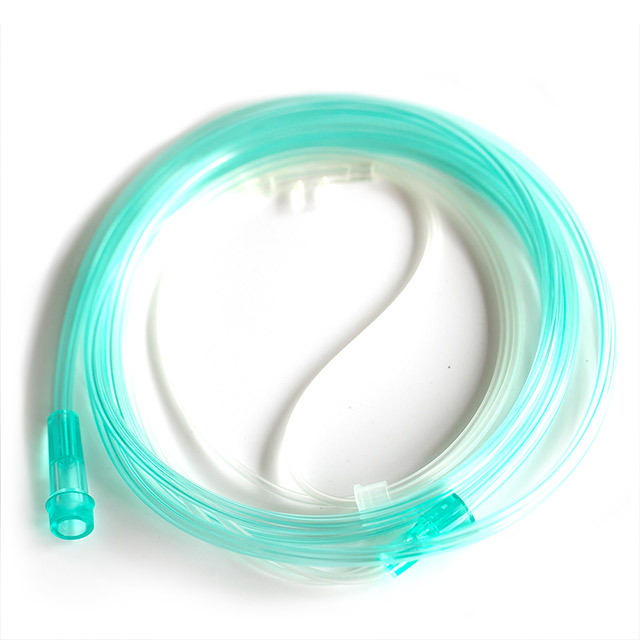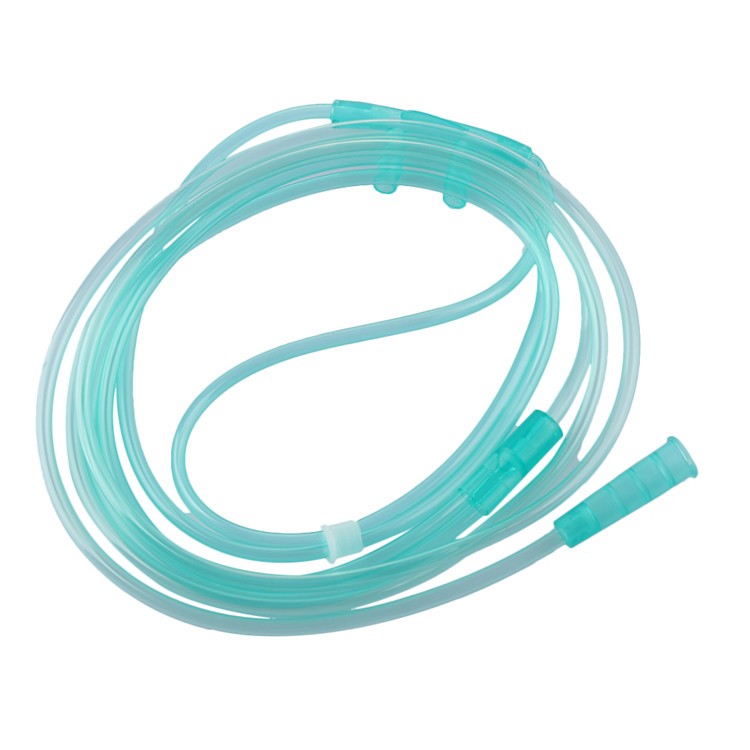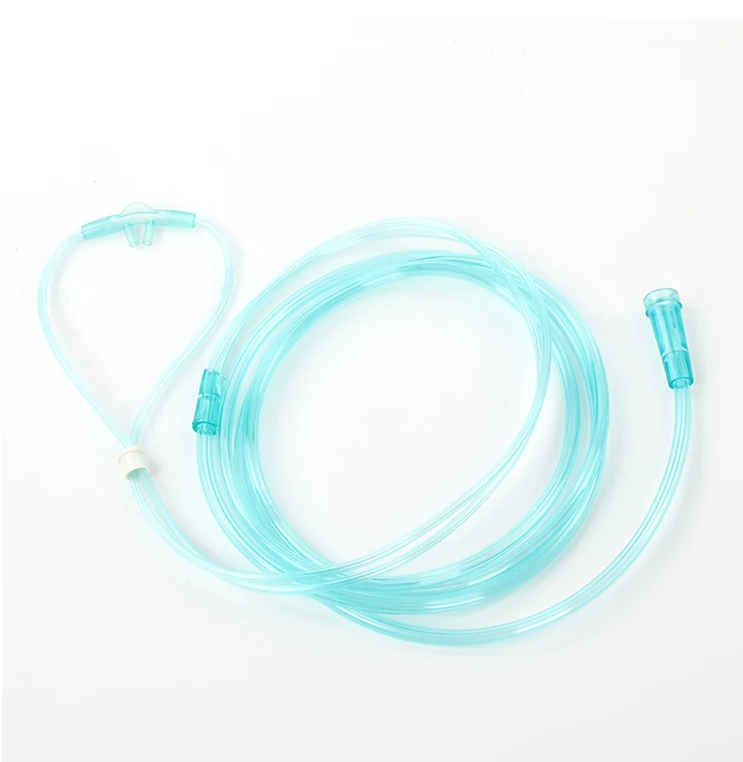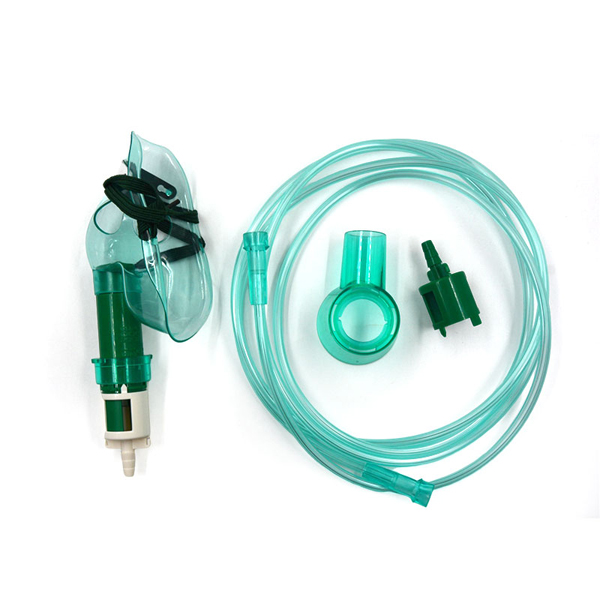Disposable PVC nasal oxygen cannula tube for infant and adult
Our advantages:
A nasal cannula is a device that gives you additional oxygen (supplemental oxygen or oxygen therapy) through your nose. It's a thin, flexible tube that goes around your head and into your nose. There are two prongs that go inside your nostrils that deliver the oxygen. The tube is attached to an oxygen source like a tank or container.
There are high-flow nasal cannulas (HFNC) and low-flow nasal cannulas (LFNC). The difference between them is in the amount and type of oxygen they deliver per minute. You may need to use a nasal cannula in the hospital or in another healthcare setting temporarily, or you may use a nasal cannula at home or for long-term use. It depends on your condition and why you need oxygen therapy.
Risks / Benefits:
What are the benefits of using a nasal cannula?
One of the biggest benefits of a nasal cannula is being able to talk and eat while using it because it doesn't cover your mouth (like a face mask).
Some other benefits of a nasal cannula (and oxygen therapy in general) include:
- Not feeling short of breath and breathing easier. This can greatly improve your quality of life.
- Feeling less tired. Working so hard to breathe can leave you feeling tired.
- Sleeping better. Many people with chronic lung conditions don't sleep well.
- Having more energy. Having the oxygen your body needs can give you the energy you need to exercise, socialize, travel and more.
What are the disadvantages of using a nasal cannula?
Oxygen therapy has some risks. These risks include:
- Nasal dryness or irritation from the cannula. Using a water-based ointment or saline spray inside your nostrils can help with this. Using a high-flow nasal cannula (HFNC) with a humidifier unit can also help because it adds moisture to the oxygen you breathe in.
- Highly flammable materials. Don't use oxygen around open flames, cigarettes, candles, stoves or aerosol sprays. Oxygen devices are highly flammable and could start a fire.
- Lung damage or pulmonary oxygen toxicity. This is damage to your lungs and airways from too much oxygen.
Product Details:


What is a nasal cannula used for?
A nasal cannula is beneficial for people who have trouble breathing and aren't getting enough oxygen. Oxygen is a gas that's in the air we breathe. We need it for our organs to function properly. If you have certain health conditions or can't get enough oxygen for another reason, a nasal cannula is one way to get the oxygen your body needs.
Your healthcare provider tells you how much oxygen you should have, just as they tell you how many pills to take when they write a prescription. You shouldn't decrease or increase your oxygen rate without talking to your healthcare provider.
How much oxygen does a nasal cannula give you?
A nasal cannula can be high-flow or low-flow. A flow rate is a measurement of how much oxygen you're getting through the cannula. It's usually measured in liters. There's a device on your oxygen supply that controls the flow of oxygen.
- High-flow nasal cannulas deliver warm oxygen. It can deliver up to about 60 liters of oxygen per minute. It delivers warm oxygen because oxygen at this flow rate could dry up your nasal passages quickly and lead to nosebleeds.
- Low-flow nasal cannulas don't deliver warm oxygen. Because of this, they tend to dry out your nasal passages quicker. The flow rate for a low-flow cannula is up to about 6 liters of oxygen per minute.
Remember, your healthcare provider recommends how much oxygen you need. It may seem like getting a high-flow cannula would be more efficient and give you more than enough oxygen. But getting too much oxygen has risks.











